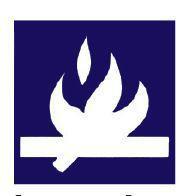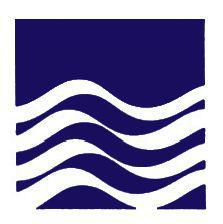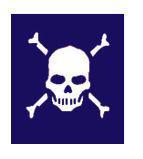SAS Urban Survival Handbook (16 page)
Read SAS Urban Survival Handbook Online
Authors: John Wiseman
Tags: #Health & Fitness, #Reference, #Survival, #Fiction, #Safety, #Self-Help, #Personal & Practical Guides, #General, #Survival Skills

EMERGENCY!
HEATER FIRE
▶
Do NOT use water or a water extinguisher (red) to put out a fire, even if there is a spillage of burning fuel
DO NOT MOVE HEATER
On no account try to carry a burning heater
SMOTHER THE FIRE
Use a fire blanket or a dry powder (blue) extinguisher. Aim it right into the appliance or at base of flames
EVACUATE and call the fire brigade
GAS OIL
Gas oil is usually stored outside in large tanks and is piped to oil-fired boilers. All the safety and maintenance advice for gas and propane boilers applies here (see
Gas
).
Oil-fired boilers and heaters need efficient chimneys or flues. When a boiler is serviced (annually), make sure that the chimney/flue is cleaned out too. If the boiler has a balanced/ room-sealed flue (which takes in air for combustion and expels exhaust gases through an outside wall), make sure nothing obstructs the flow of air around the vent outside.
Oil tanks
The tank for the oil must be well maintained. The main problem with these tanks is that any water that enters, sinks to the bottom and can cause rusting. In Britain, the tanks may be used to hold a maximum of 3500 litres (770 gallons)—which is a lot of oil. Imagine the problems you will incur if the tank is not well looked-after and the base of the tank suddenly gives way! There is a drain-off cock on some tanks, at the bottom, to let any accumulated water out.
SOLID FUEL
 Once upon a time open fires were the only source of heating. They are inefficient and wasteful. A lot of the heat goes up the chimney—polluting the atmosphere with several harmful by-products. In some areas only special smokeless fuels may be used to reduce atmospheric pollution.
Once upon a time open fires were the only source of heating. They are inefficient and wasteful. A lot of the heat goes up the chimney—polluting the atmosphere with several harmful by-products. In some areas only special smokeless fuels may be used to reduce atmospheric pollution.
Closed stoves and cooking ranges are more efficient, radiating more of the heat into the room and making it possible to burn fuel more slowly.
All solid fuels produce ash, dust and soot, acids and tars when they burn. Some of this material collects in the chimney, reducing its efficiency—which could be a very serious fire hazard. An inefficient chimney will also allow smoke and gases to fill the room where the fire is burning. This is very dangerous. One of these gases will be carbon monoxide—inhalation of which, even for a short amount of time, can be FATAL (see
Gas
).
The chimney should be swept annually, and once during the burning season. Apart from the risk of blockage and fire, acids in the soot and tar will attack the lining of the chimney during the summer months.
REMEMBER
For a fire to burn well and safely, the chimney must be kept clear of obstructions and the room must have a good source of ventilation. As warm air rises up the chimney, it takes with it potentially dangerous gases and the fire is able to draw on new supplies of air.
Burning wood
Wet or unseasoned wood is no good for burning—if you can get it alight it will be smoky and possibly cause dangerous sparks. Seasoning takes about two years—at the end of which time the wood looks drier and will have drying splits in the ends.
Provided they are well guarded and no flammable materials are left close by, stoves and heaters can be left burning slowly overnight, but get a good blaze going in the morning to warm up the chimney.
Servicing
Apart from making sure the chimney is clean and efficient, check all flues and stoves for signs of smoke leakage. Firebacks in open fires may need attention. They protect the chimney from the intense heat of the fire, so don’t allow large cracks to go unattended. Renew any fire cement as it deteriorates.
WATER
 Water is one of our basic human needs, but attitudes to safe drinking water and levels of sanitation vary remarkably around the world. The water system in most homes is prone to all sorts of problems, which may not be immediately life-threatening, but which can do a lot of damage to your home and your peace of mind.
Water is one of our basic human needs, but attitudes to safe drinking water and levels of sanitation vary remarkably around the world. The water system in most homes is prone to all sorts of problems, which may not be immediately life-threatening, but which can do a lot of damage to your home and your peace of mind.
A leaky pipe may go ignored for months or years, especially if the outward signs are not very dramatic. But this leak may lead to structural problems and rot. When the damage begins to show, the remedial work may be expensive or very difficult. Your home could become damp and smell damp. Your health could suffer.
PLUMBING DECISIONS
Simple plumbing jobs, such as changing the washer in a leaky tap or in the valve in a ball-cock assembly, are not very difficult and could be attempted by the beginner. Larger jobs, which might result in having to turn the water off for days (while you feel your way through the process) are not such a good idea. The work can also be quite strenuous.
Because plumbing for water is fairly simple in principle, with fairly low risk factors involved, many people ‘have a go’. The plumbing in older homes and multi-occupied homes may be very difficult to follow as a result. There are numerous books on the market which describe simple procedures, and the plumbers’ supply shop may be able to advise you. What neither of these can take into account are the idiosyncrasies of your existing plumbing.
If money and the cost of plumbing work are your main worry, do-it-yourself plumbing might be the answer. You may save money simply by understanding what you are asking a plumber to do—how much work it is and the sort of material costs involved. You may make his job quicker if you have already identified a problem before he arrives. If you attempt a difficult job and get in a mess, it may cost you more to have a plumber sort it out.
Remember that several special tools are required. Some homes have virtually no tools at all. Do you want to buy an adjustable spanner or a pipe bender for one job? Borrowing or hiring tools is a possibility.
WATER SUPPLY
 Urban water supplies come from many sources—rivers, wells, reservoirs and underground springs. All of it is processed to offer safe drinking water to the public, despite the fact that much of it is used for washing, flushing toilets and other things for which pure water is not necessary.
Urban water supplies come from many sources—rivers, wells, reservoirs and underground springs. All of it is processed to offer safe drinking water to the public, despite the fact that much of it is used for washing, flushing toilets and other things for which pure water is not necessary.
Modern demands for water are putting increasingly heavy demands on supplies, especially in times of drought. Processing is costly and uses up valuable energy resources. Economy in use is therefore a first priority in reducing pressure on the environment and on the pocket.
Pure water?
Water treatment is a very complicated business, involving settlement tanks, filtration beds and the addition of chemicals. Most water authorities prefer the water going into the mains to be slightly alkaline—in order not to corrode the system. To ensure this, lime is added, but only at about 20 parts per million. Other chemicals are used too, like ferrous sulphate to make impurities cling together so that they can be filtered out more easily (about 18 parts per million).
A small amount of chlorine (about 5.5 parts per million) is used to kill off bacteria which may be present. By the time the water leaves the treatment plant, the level of chlorine will have been reduced to less than one part per million.
Most chemicals added to water, such as the chlorine or copper from your own pipework, may affect the taste, but are harmless at the concentrations at which they occur.
Other chemicals, which are known to be present in some supplies, are far from harmless. These include: Aluminium:
Sometimes added during water treatment. May be carried into reservoirs from the soil. May be naturally present. Links are being considered with Alzheimer’s disease (premature senility). Water is unlikely to be a major source of aluminium—but it has been suggested that water-borne aluminium is in a readily absorbed form.
Nitrates:
Increase the risk of a rare blood disease which affects bottle-fed babies (whose feed is made up with tap water). Suspected (not yet proven) link with cancer. Leached into supplies from fertilizers and manure in intensive farming. Very difficult to remove.
Lead:
Most likely source is your own plumbing. Old pipework was made of lead (see panel). Very serious. Can damage the brain and nervous system, cause anaemia and affect the muscles, and stunt mental development in children.
Polycyclic aromatic hydrocarbons:
From coal tar pitch, used to coat the inside of mains pipes (taken out of use in the UK in the mid-1970s). Suspected link with cancer.
Industrial chemicals:
Such as industrial degreasing agents and dry cleaning fluid. Suspected link with cancer. These are among the numerous chemicals pumped into streams and rivers when pollution controls are flouted.
LEAD
 Plumbing for water used to be made entirely of lead. In old houses this may still be the case. In updated systems, some lead piping may still be found as the connection to the water mains. Lead poisoning is extremely serious and in some cases debilitating or fatal. It attacks the brain and the nervous system. It affects the muscles. It causes anaemia. The effects can be devastating in young children.
Plumbing for water used to be made entirely of lead. In old houses this may still be the case. In updated systems, some lead piping may still be found as the connection to the water mains. Lead poisoning is extremely serious and in some cases debilitating or fatal. It attacks the brain and the nervous system. It affects the muscles. It causes anaemia. The effects can be devastating in young children.
Some of the lead we absorb is from atmospheric pollution, but levels found in water samples indicate that water-borne lead is a major problem.
The problem is worse in areas with soft water, because the pipes do not develop a protective coating of limescale (see Hard and soft water). Soft water may even dissolve small quantities of lead as it travels through the pipes. No lead plumbing should be considered safe, however.
The long-term solution is to have ALL lead plumbing removed and replaced—but be prepared for a major upheaval.
The short-term solution is to filter all drinking water (see Filtering water). Never drink water that has been standing in the pipes. Run the tap for a few minutes before drinking.